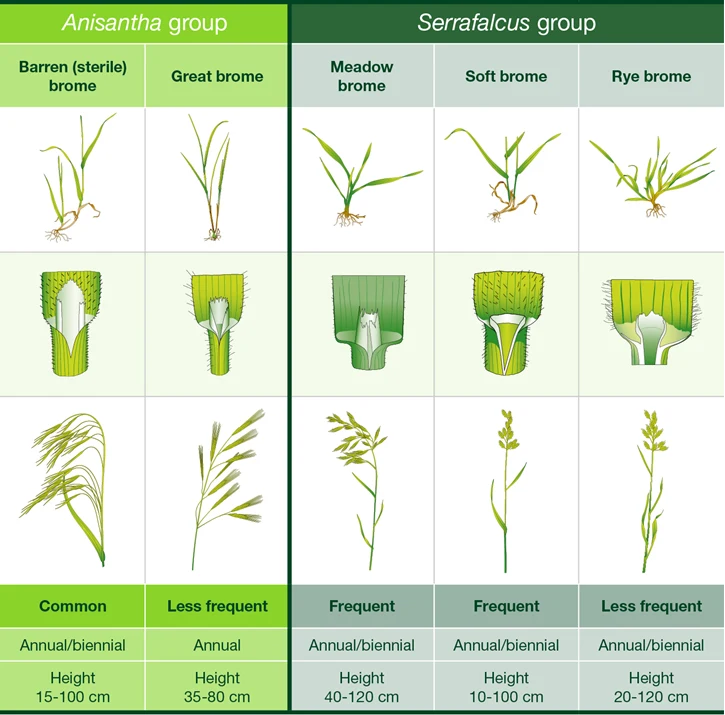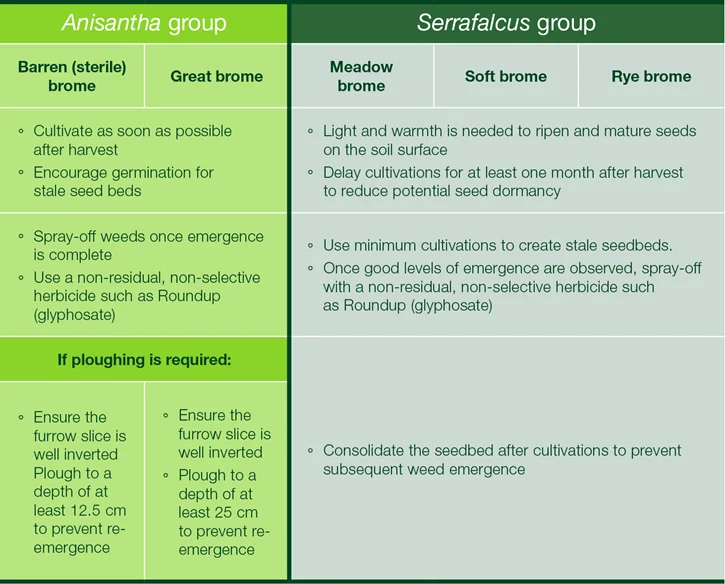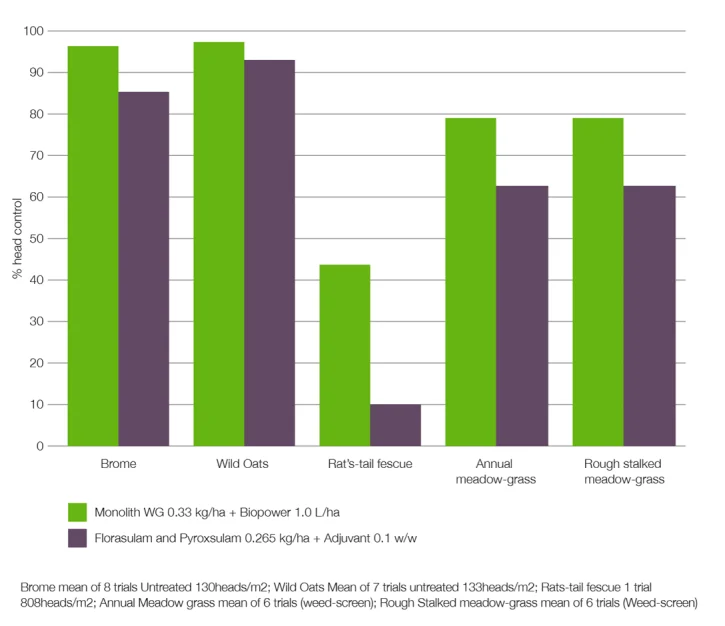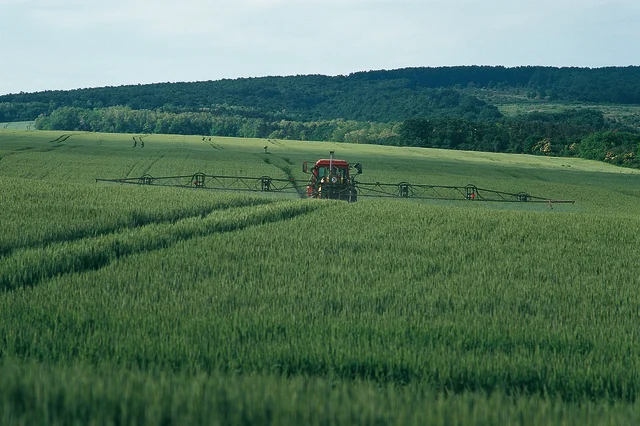Published on 23rd March 2021
Weed Management
Take an IMP approach to brome control in winter cereals

With reports of emerging resistance to ALS-inhibiting herbicides, and the need to take a more sustainable approach to weed control, growers should employ a range of integrated pest management (IPM) approaches to manage brome, and protect yields.
Brome grasses are a widespread and highly competitive annual weed in winter cereals. With reports of emerging resistance to ALS-inhibiting herbicides, and the need to take a more sustainable approach to weed control, growers should employ a range of integrated pest management (IPM) approaches to manage this pernicious grass-weed, and protect yields.
Competition from brome grasses can impair crop establishment and growth, and even at low densities, populations of brome can reduce winter wheat yields by between 0.5 to 1 tonnes/ha (1), while higher brome densities will result in significant yield loss.
There are two groups of brome species, each having different characteristics which will determine the best IPM strategies to aid control. The first group, Anisantha, includes barren (or sterile) brome, and great brome, while the second group, Serrafalcus, includes meadow, soft and rye bromes.
Barren (sterile) brome is the most frequently-found species in the UK, and plant for plant, is more competitive than black-grass. It also has the ability to return large quantities of seed, perpetuating and increasing weed pressure in the field.
In order to put in place an appropriate brome control strategy, you need to be able to identify the species present. Bromes can be difficult to identify at the vegetative stage, so farm history and annual mapping when bromes are in flower in June or July will help to monitor these weeds, and inform future control techniques.
Barren (sterile) and great bromes are winter annuals. These species require vernalisation to flower and successfully set seed, which may be viable for up to two years in the soil (2,3). Prolonged exposure to light will cause these brome species’ seeds to become dormant. Dormancy varies within populations and it is possible that dormant seed could re-emerge after ploughing to cause problems in later years (4). Cultivating as soon as possible after harvest will help to encourage germination for control with a non-residual, non-selective herbicide. If straw is chopped and left on the surface, cultivation may not be required, as long as there is sufficient moisture for germination.
The Serrafalcus group, including meadow, rye and soft brome require time for ‘after-ripening’ before being viable, and to avoid triggering dormancy. They also require light for germination. These species can cause long-term problems since seeds may remain viable for seven to 10 years. If you have these species present, delaying cultivation for at least a month after harvest will allow this after-ripening process to occur, and encourage germination to enable chemical control.
Identifying the different brome species
Identify brome species in June and July
Look for flowering heads and map areas for future reference

Cultural control methods for brome control

Great brome and rye brome may not have shed seed by harvest. In badly-affected areas:
Prevent unnecessary seed spread
Consider not combining with rest of crop
Remove affected straw from fields
Do not use straw for livestock bedding
Clean obvious weed seed from combine before moving fields
Spring cropping can improve brome control:
Allows more time for cultural techniques in the autumn
By spring most brome weeds will have emerged
Final spring cultivations or herbicide applications will remove any remaining brome weeds
Autumn-sown break crops provide brome control options:
Winter beans or oilseed rape are good candidates
Selective grass-weed herbicides support good resistance management
Later-drilled break crops allow for more cultural controls in autumn
Use appropriate ‘in-crop’ herbicides to control surviving brome weeds:
Take herbicide resistance strategies into account
Do not use herbicides as sole method to control brome
Additional options for high pressure brome situations along field edges:
Create a permanent perennial vegetation barrier by sowing a wide grass margin
Can provide long-term control of bromes and other invasive annual weeds, such as cleavers
Required regular, timely mowing to be effective
Using herbicides for brome control
Results of a recent study indicate that ALS-inhibiting herbicide resistance is emerging in some brome populations (5). Though the issue is not yet widespread and brome populations are still sensitive to other modes of action, growers need to increase their vigilance of herbicide efficacy, ensure they use the correct dose rates and application techniques, and choose the most appropriate product.
As part of a good resistance management strategy, brome control should focus on cultural techniques and reducing populations in fields. Where it is necessary to use herbicides, growers should vary the modes of action used, and ensure only one ALS-inhibiting herbicide is applied per crop, unless the mixture or sequence is approved and listed on the product label.
Other weeds in the crop need to be considered when choosing the most appropriate product to control brome, in particular those species that have also developed resistance to some modes of action, including black-grass, wild oats, and Italian rye-grass.
Reasonable levels of post-emergence control of all brome species can still be achieved with ALS-inhibiting herbicides, but care should be taken to vary modes of action, and ensure good application technique.
Pre-emergence, residual herbicides such as Liberator are effective as part of a comprehensive herbicide programme. This should be followed later in the season with an appropriately-timed post-emergence herbicide, such as Pacifica Plus or Monolith.
In five independent trials from 2016-17 Monolith gave class-leading control of brome populations, and Bayer’s recent weed screens demonstrated that when targeting the Serrafalcus group including meadow, soft and rye-brome Monolith provides better control than Pacifica Plus. However, if targeting barren (sterile) brome, Pacifica Plus, provides just as good control while also targeting a wide range of broad-leaved weeds, which may also be present.
Monolith’s co-formulation of mesosulfuron with propoxycarbazone, offers a 10% uplift in control of black-grass over Atlantis, even on populations with metabolic resistance, and provides good control of rye-grass and/or meadow-grass where it is present alongside brome.

Spring 2018 trials. Brome mean of 8 trials Untreated 130heads/m2; Wild Oats Mean of 7 trials untreated 133heads/m2; Rats-tail fescue 1 trial 808heads/m2; Annual Meadow grass mean of 6 trials (weed-screen); Rough Stalked meadow-grass mean of 6 trials (Weed-screen)



